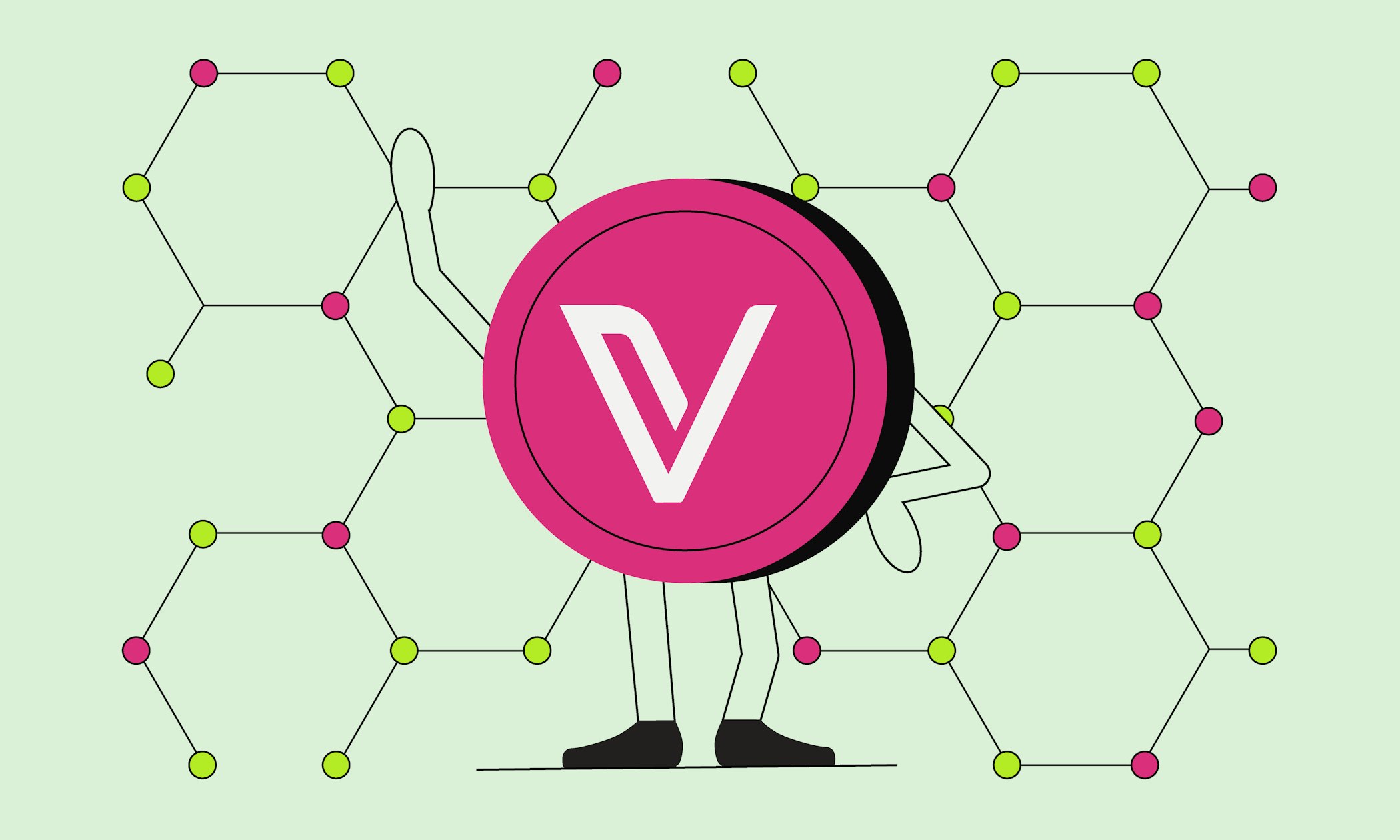
What is VeChain (VET)?
Created in 2015, VeChain is a blockchain platform with the mission of streamlining supply chain management with distributed ledger technology (DIT).
VeChain is designed to improve the flow of supply chains and to enhance business processes with the help of secure distributed ledger technology.
VeChain strives for “mass business adoption”, hoping that their technology will be the future standard for supply chain management.
One of the VeChain tokens is VET, which is used to settle smart contracts across the VeChain network.
The VeChain price reached its all-time high of €0.19 in Spring 2021.
What is VeChain?
Co-founded in 2015 by Sunny Lu, the former CIO of Louis Vuitton China, and Jay Zhang, VeChain is a blockchain platform with the mission of enhancing supply chain management through distributed ledger technology (DIT). Initially they launched the cryptocurrency VEN on the Ethereum blockchain, raising $20 million as part of a token crowdsale. VEN was later replaced by VET at a 1:1000 ratio when VeChain launched its own blockchain, the VeChainThor blockchain.
Smoothing out supply chain issues and easing information management for businesses is the main goal of the VeChain platform. The key to VeChain’s mission are smart chips that are used to track all points related to a supply chain flow. These are connected to a distributed ledger for maximum security, transparency and reliability. For example, in its partnership with Renault, VeChain created a digital car maintenance book that cannot be tampered with, thereby securing potentially sensitive repair data.
VeChain’s secondary goals are to become a leader in decentralised applications (DApps), initial coin offerings (ICO) and being the middleman for the Internet of Things (IoT).
VeChain has two currencies, VET and VTHO. VET is the VeChain token used to settle smart contracts across the VeChain network by acting as “smart money”. Anyone can buy and invest in VET. The VeChainThor Energy token, or VTHO, is used to make transactions on the VeChain blockchain.
How does VeChain work?
VeChain is one of the most famous users of the Proof of Authority (PoA) consensus protocol. In PoA, identity is used as a stake to validate transactions and to validate the creation of new blocks. Validators earn their position through their reputation, and are therefore incentivised to maintain the transaction process in order to also maintain their reputation. Anonymity is not an option and disclosing one’s identity is a prerequisite for VET holders who wish to become a validator. Contrary to consensus mechanisms like Proof of Work (PoW), PoA is not energy intensive and does not require a minimum number of validators to reach consensus, contributing to comparatively fast transaction speeds.
How to buy VeChain?
You can buy VeChain through cryptocurrency exchanges like Bitpanda using fiat currencies, e.g. euros or U.S. dollars. It’s a good idea to first get familiar with the VET price history and the current exchange rate. Once purchased, your VeChain investment can be viewed and accessed in a digital wallet similar to a banking app. You then have the option to hold on to your VET or sell it again via the exchange.
VeChain price history
Like other cryptocurrencies, VeChain is considered a highly volatile asset. Its price has fluctuated through highs and lows throughout its existence, and there’s no way to make a guaranteed VET price prediction. As always, it’s important to do your own research before investing in crypto.
From the launch of VET on the VeChainThor blockchain in 2018 to the first few months of 2021, the price hovered around the €0.005 mark. Starting in January 2021, the price shot up, reaching its all-time high of €0.19 first in April 2021 and then the same again in May 2021. The price dropped significantly again and has failed to reach its former peak. Currently, VET is trading at an average daily high of €0.0244 and an average daily low of €0.0227. The supply of VET is fixed at 86,712,634,466 tokens.
How to use VeChain?
Businesses use VeChain’s blockchain in order to better track and maintain the flow of their information and processes. Many big companies and brands already make use of this technology, including PwC, UFC, Bayer, and Walmart. Luxury fashion conglomerate LVMH uses it to track leather goods and BMW uses Vechain to prevent odometer fraud in its vehicle sales.
This article does not constitute investment advice, nor is it an offer or invitation to purchase any digital assets.
This article is for general purposes of information only and no representation or warranty, either expressed or implied, is made as to, and no reliance should be placed on, the fairness, accuracy, completeness or correctness of this article or opinions contained herein.
Some statements contained in this article may be of future expectations that are based on our current views and assumptions and involve uncertainties that could cause actual results, performance or events which differ from those statements.
None of the Bitpanda GmbH nor any of its affiliates, advisors or representatives shall have any liability whatsoever arising in connection with this article.
Please note that an investment in digital assets carries risks in addition to the opportunities described above.